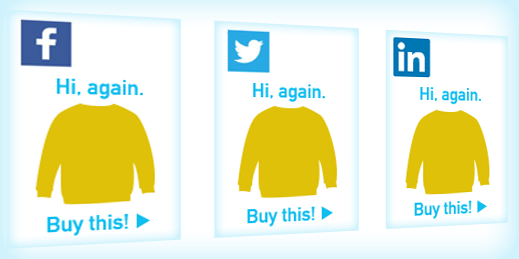We’ve been collecting tons of data on you, so we’re pretty confident this blog will be right up your alley.
Just kidding – we’re not Google. But the idea of being tracked probably gave you a moment’s pause. The same goes for your customers, which is why we all need to be smart about how we track and target these days.
Cue the backlash.
Nearly two-thirds of consumers are worried about how marketers use their information.1 Even millennials, those digital natives, are bothered by it. And new research suggests that targeting users individually may even have a negative impact on intent to purchase.2
Against this backdrop, industry leaders like Apple CEO Tim Cook and Snapchat CEO Evan Spiegel have been reaffirming their commitment to privacy recently, with Spiegel declaring, “We care about not being creepy.”
How to stay on the right side of the line.
As new technologies make it ever easier to track buying behavior, personal data, social media activity – even our movement from place to place – we’d like to offer a few tips:
Remember the well-publicized case of Target sending baby-related offers to a teen before her irate dad even knew she was pregnant. Going forward, the company adjusted its approach by mixing in lawn mower coupons with ones for diapers.
Be personal, but not too personal. For example, it may be okay if I know you’re a college student, but creepy if I know which college you attend.
Instead, serve up a related product. Or sweeten the pot with a special offer. The point is, change up your messages when retargeting and continually optimize.
Don’t be presumptuous. A colleague recently got a follow-up from a business journal thanking her for reading their email. The problem? She hadn’t even opened it, so it came off as just a ploy to engage her. And even if they knew she’d read it, based on data they’d collected, tipping her off to that fact just comes off as creepy.
Let me opt out. Or in. Not surprisingly, the walls of privacy come down when consumers trust us (speaking of trust, have you read our recent post on brand trustification?). Eighty percent of consumers willingly provide personal information to a trusted brand.4 But they expect the brand to be transparent about its intentions – which data it’s collecting, why, and how that info can help them. If they see value in it, they’ll go along. But give customers an easy opt-out just the same.
Meet your goals – without the backlash.
Perhaps the right place on the privacy continuum is where people are being targeted but don’t feel like they are. Once it’s obvious – well, that can be creepy.
Where do you stand on this issue? And why? Comment below or email us.
1 “Study: Consumers Wary of Marketers Using Big Data,” Adweek, February 26, 2014.
2 “Online Creep: Targeted Ads May Have Opposite Effect of Marketers’ Intent,” Ithaca College, April 8, 2015.
3 “Privacy,” The Futures Company.
4 “Study: Consumers Wary of Marketers Using Big Data,” Adweek, February 26, 2014.


 See what they have to say
See what they have to say
The fire has been kindled.
Very timely and well written.